Canyon
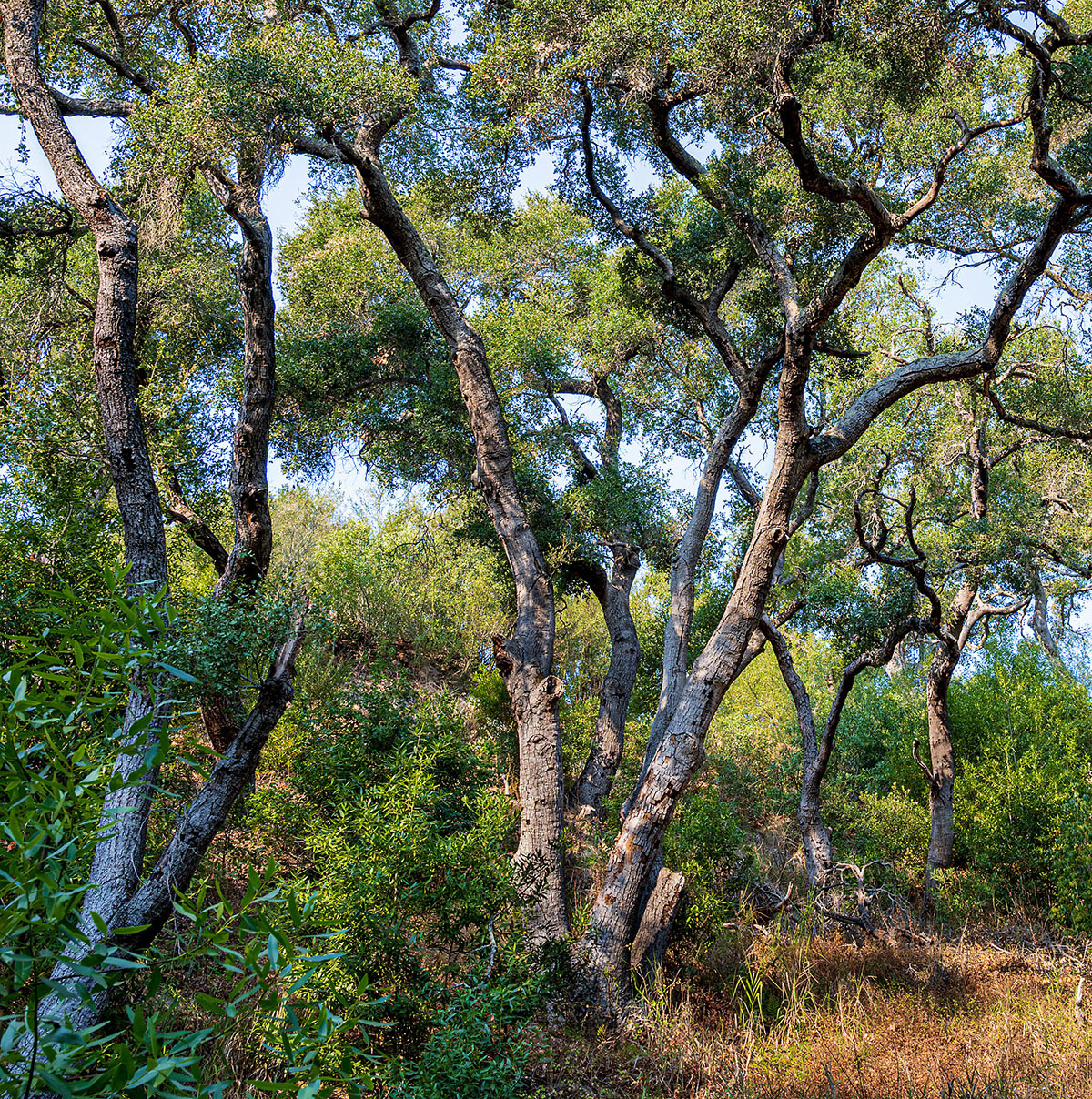
The Buffer Zone
Natures Filtering System at Work
The Canyon Section isn’t a formal garden but a lightly managed natural area — an interface between the land and creek called a riparian area. When there is adequate rain, Mission Creek flows in the early to late winter, supporting the growth of trees and thick vegetation all the way downstream. Riparian zones are instrumental in improving water quality.
Even after dying, fallen trees provide vital habitat for amphibians, insects, birds, and fish. When you stand in the shade of a riparian area, be sure to listen for these signs of life.

Noteworthy Plants
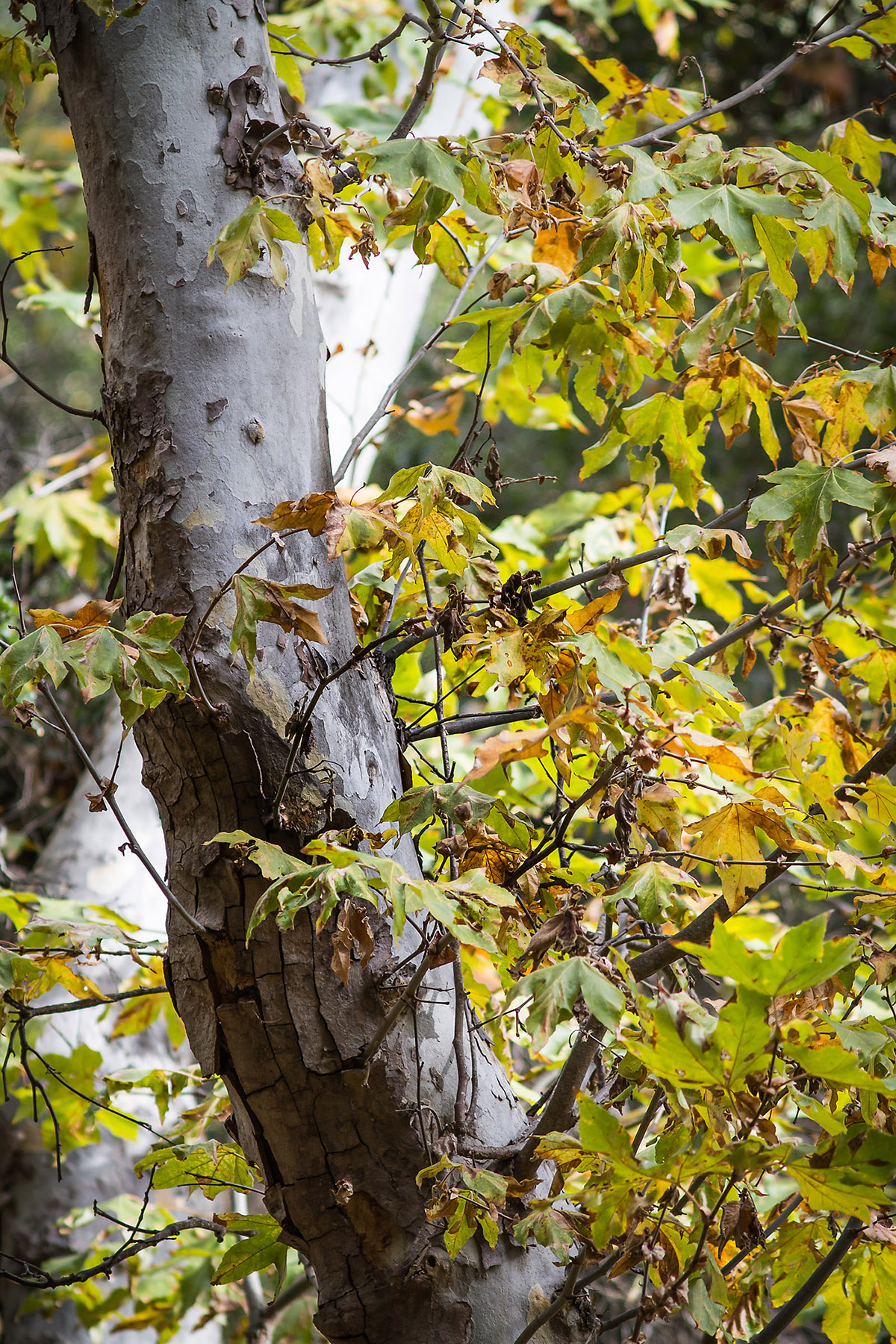
Western sycamore
Platanus racemosa
A common tree in riparian areas, the soft hairs on the underside of the leaves are used by hummingbirds to help make their nests.
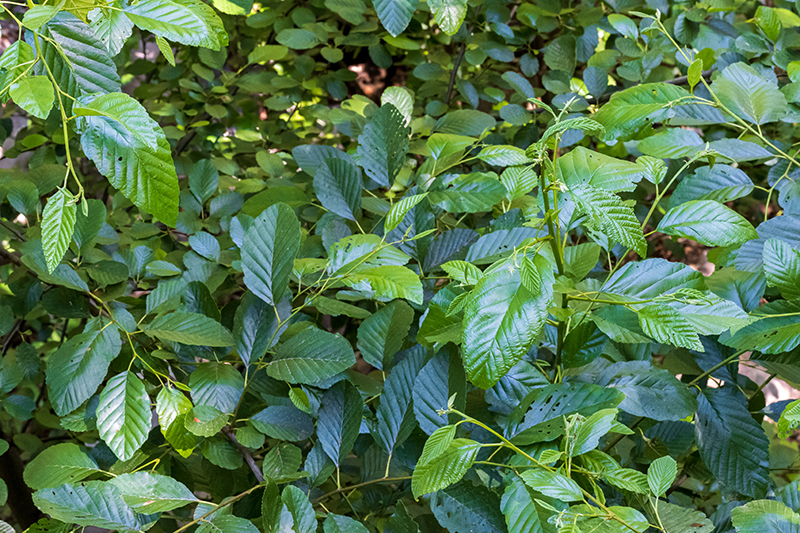
White alder
Alnus rhombifolia
An important riparian species, these trees help stabilize riverbanks and can even create their own nitrogen, a critical plant nutrient.
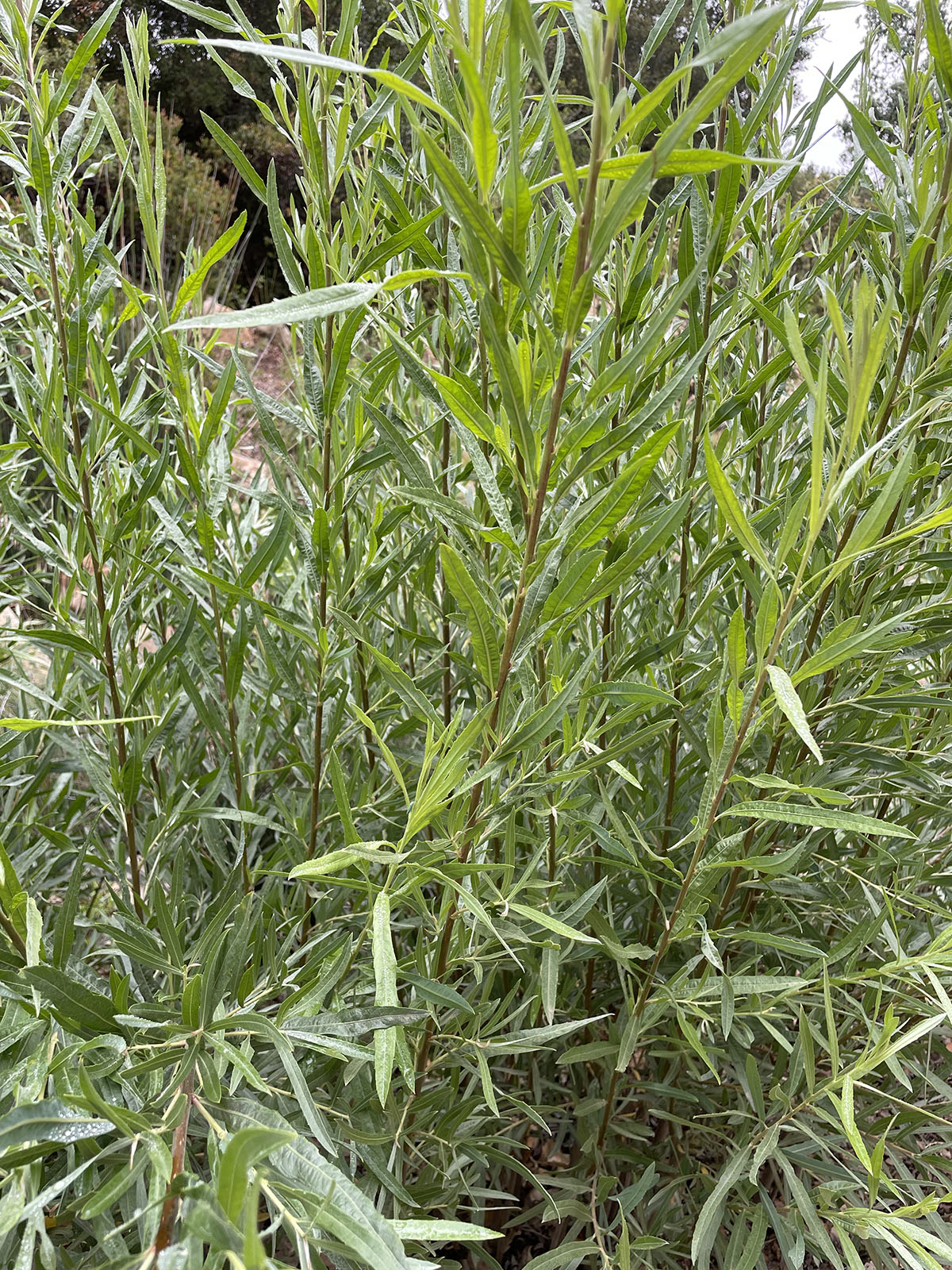
Willow
Salix
There are nearly 30 species of willow native to California. The bark of willows is the source of salicylic acid, a key ingredient in aspirin.
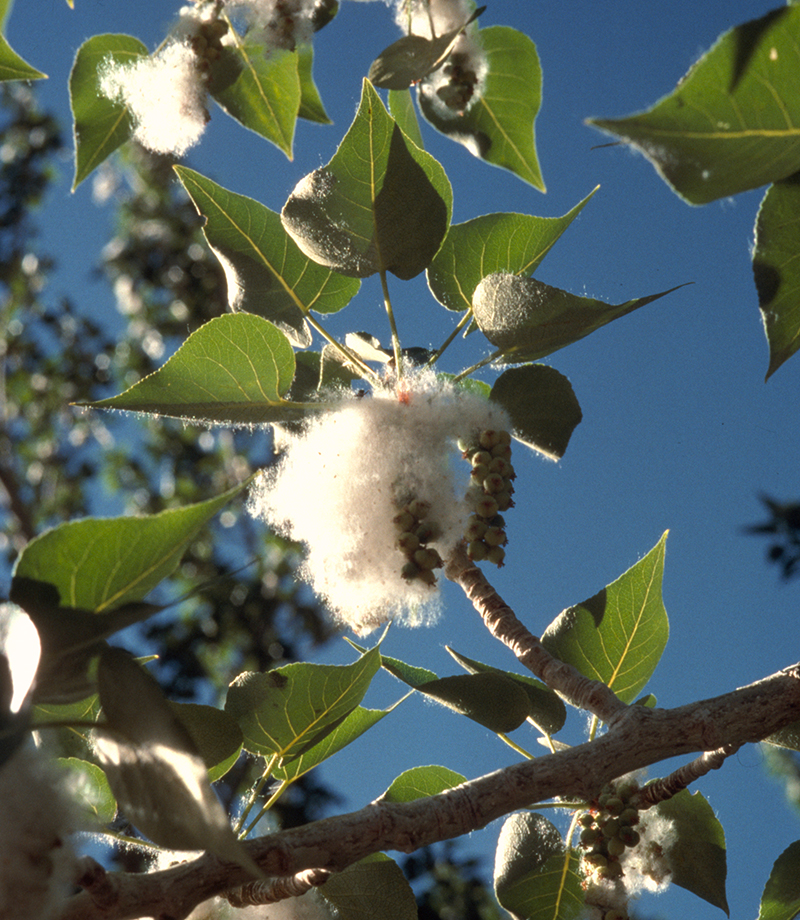
Black cottonwood
Populus trichocarpa
A so-called pioneer species, these trees are adapted to growing in riparian areas that have experienced disasters such as fire or flooding.
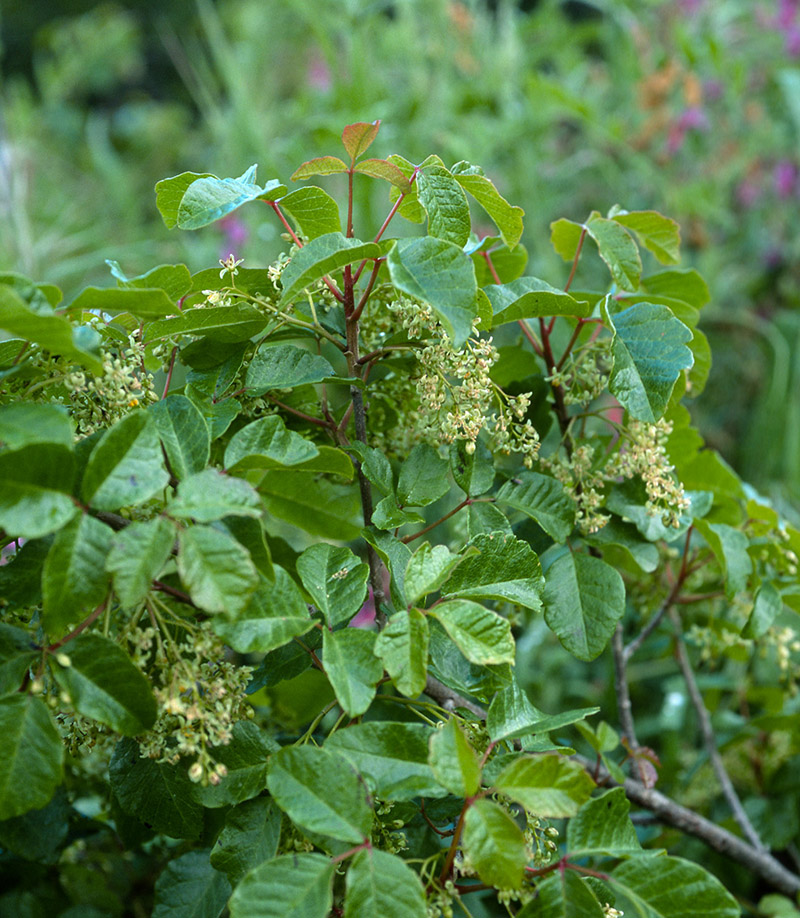
Poison oak
Toxicodendron diversilobum
Feared and loathed by many humans, this plant is actually an important source of food for wildlife including birds, deer, and squirrels.
Seasonality
Productive and Diverse Plant Communities
Riparian habitats are fueled by winter precipitation and at their peak in spring. Even as Mission Canyon dries up in late summer, the underground water flow extends seasonal and perennial flowering, supporting year-round foraging and wildlife habitat, for land and aquatic food webs.
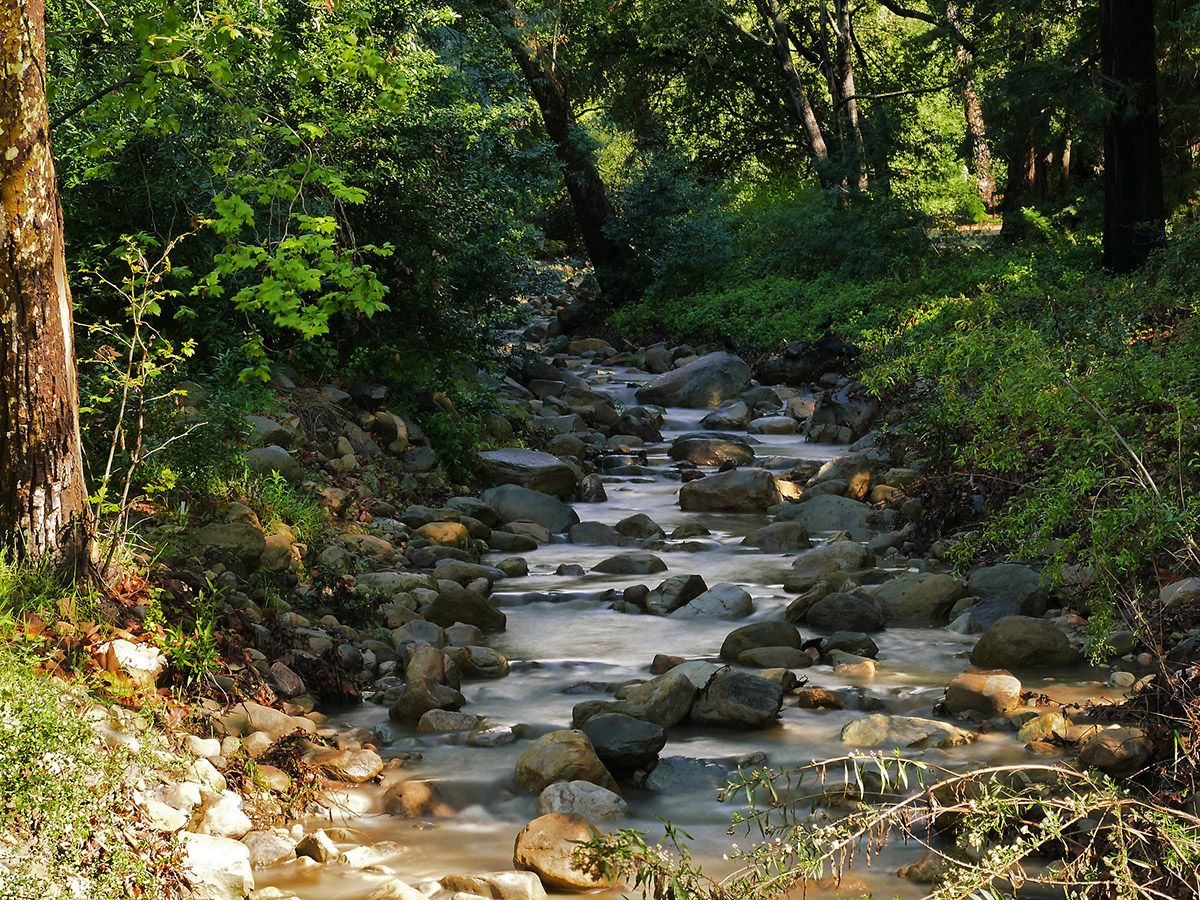
Mission Creek is ephemeral, meaning it flows above ground for only part of the year. (Photo: Randy Wright)
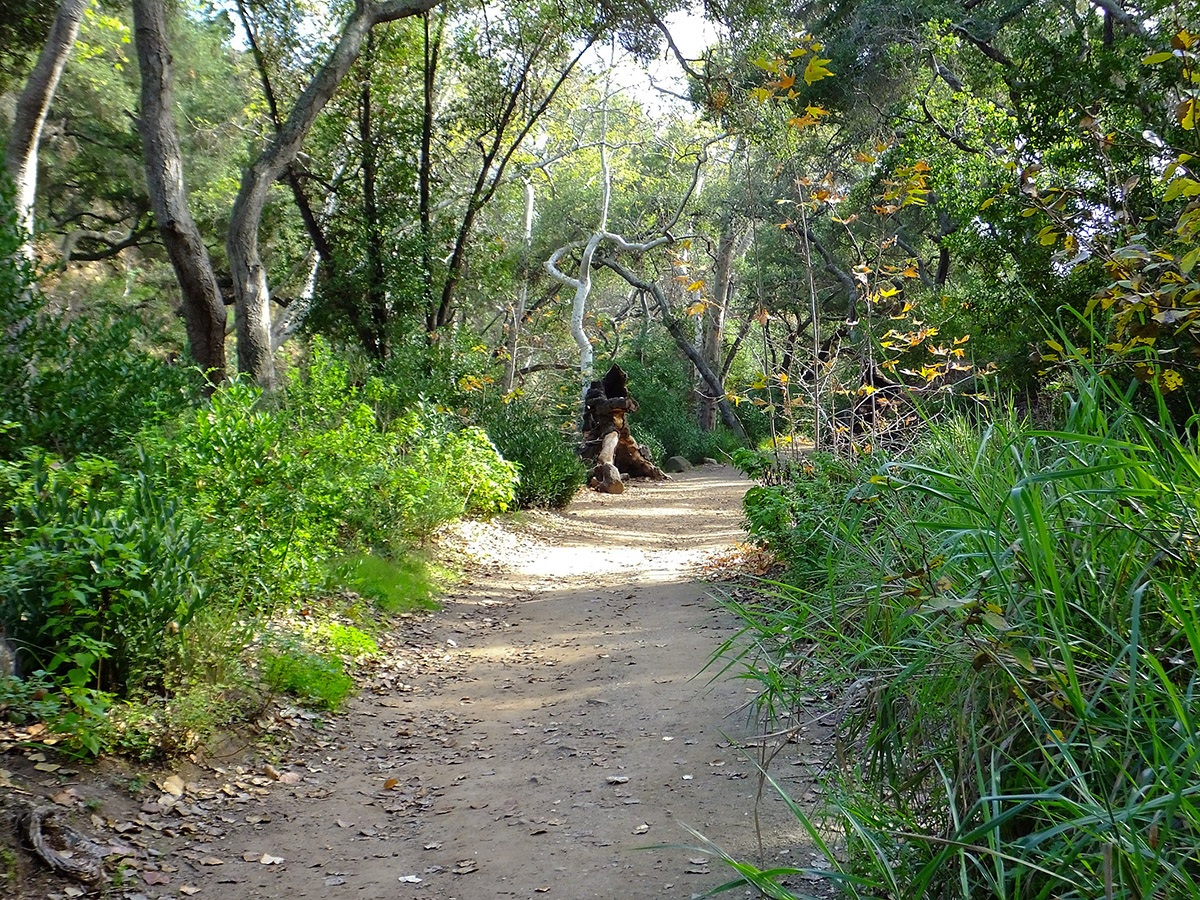
The path through the Canyon features trees common to streams and canyons throughout California, including bigleaf maple (Acer macrophyllum) and western sycamore (Platanus racemosa). (Photo: Randy Wright)
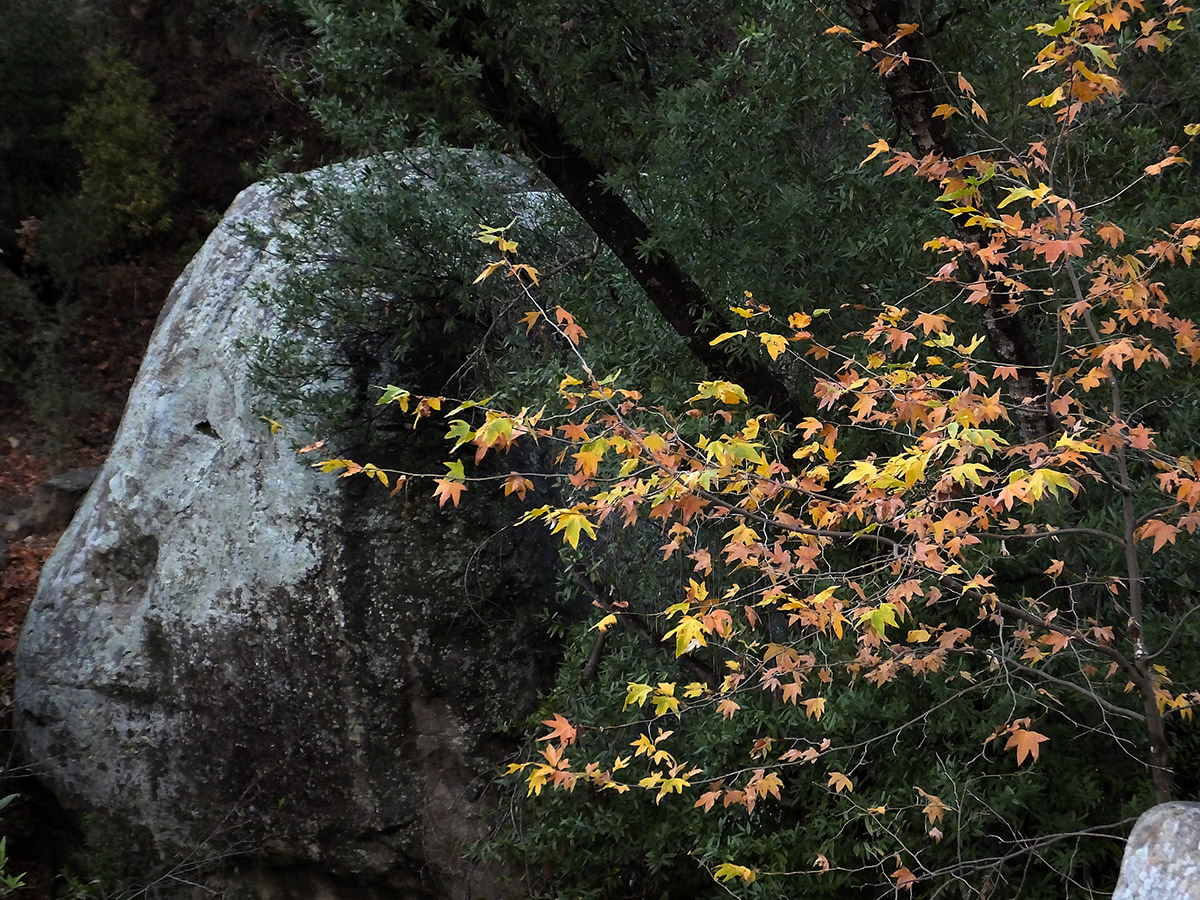
Western sycamore (Platanus racemosa) displays some fall color near the Lasseter Boulder. (Photo: Randy Wright)
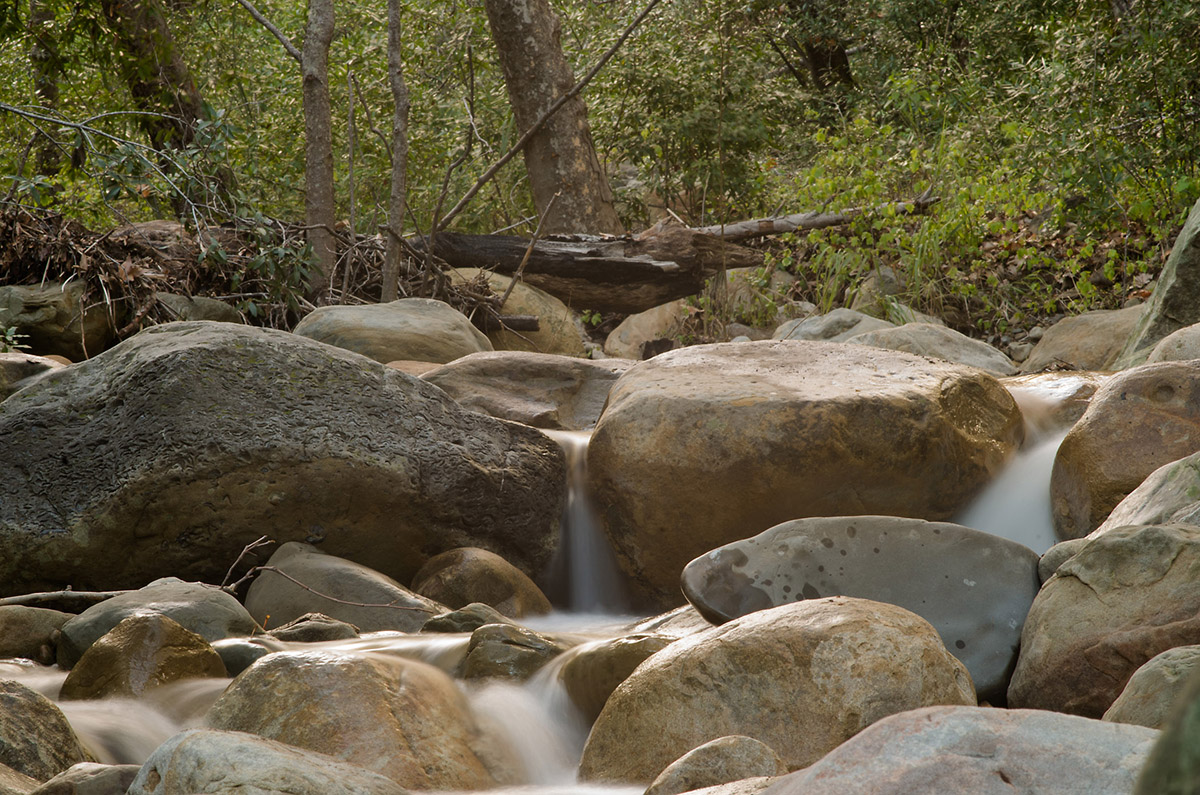
The rocks and large boulders seen in Misson Canyon are thought to have been deposited there during the last glacial period. (Photo: Scot Pipkin)
 Donate
Donate